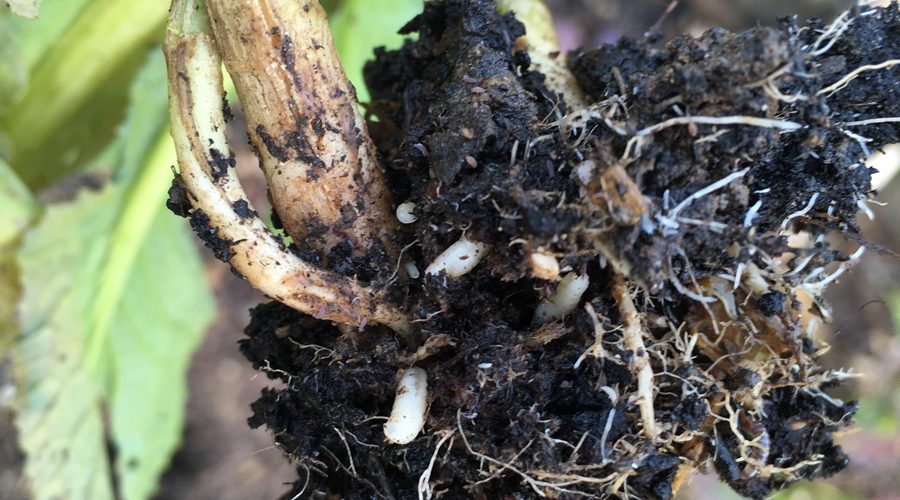We had the first big frost of the year in the garden the other day, and I noticed that one of the Giant Red Mustard plants was very wilted. I thought the poor thing had just found it a bit too chilly and would bounce back as the day warmed up, even though the other plants were fine. When the ground had thawed out a little and the sun had been out for a few hours it was still wilted, so I firmed down the soil around the base of the plant thinking that perhaps the soil was a little loose.
 A couple of days later, with the weather somewhat warmer again, the poor plant was still very wilted. I decided to pull it up to have a look to see if something had eaten the roots and found several cabbage root fly maggots in the root ball. It was quite surprising as I’ve never found them in the veg patch beyond September and have always thought of them as a summer pest.
A couple of days later, with the weather somewhat warmer again, the poor plant was still very wilted. I decided to pull it up to have a look to see if something had eaten the roots and found several cabbage root fly maggots in the root ball. It was quite surprising as I’ve never found them in the veg patch beyond September and have always thought of them as a summer pest.
I guess we are going to find that garden pests being active at unusual times of year is another effect of climate change and these milder winter months. I have made a mental note to keep an eye out for other pests that would normally be inactive at the moment!
If you haven’t come across cabbage root fly before, here’s a quick outline of symptoms and prevention…. The flies, which look like normal house flies, lay their eggs at the base of brassica plants – cabbages, kale,caulk, turnip, broccoli, mustard leaves etc. When the eggs hatch, the maggots bury into the ground and feed on the roots of the plants. Once the roots become damaged, the plant wilts. As all this happens out of plain sight it is difficult to spot until the damage is done, and the plant is unlikely to recover. Prevention is the best option, and brassica collars put around the base of the stem when you first plant them together with an insect proof netting is the best option. There’s a bit more info via the blog post link below.


